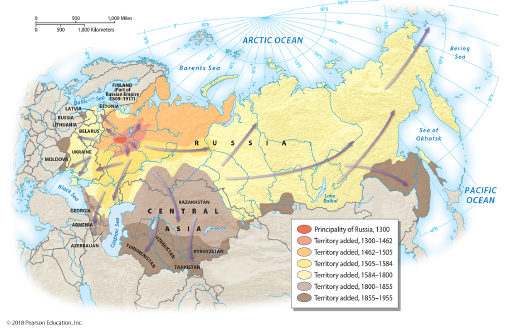In the visible light image, find the cloudless area off the coast of Oregon and Washington. Does this region contain relatively large amounts of water vapor, or relatively little water vapor? (Hint: Compare the visible light and water vapor images.) What could explain the lack of clouds here?
The question is based on Figure 20-3 showing visible light, infrared, and water vapor images of western North America and the northern Pacific Ocean basin taken on the same day and time.
What will be an ideal response?
Large amounts of water vapor. Lack of uplift mechanism; high pressure in area; air not yet cooled to dew point temperature.
You might also like to view...
What is the difference between mutualism and commensalism?
What will be an ideal response?
The pattern of expansion of the Russian Empire was characterized by which of the following?

A) expansion northward into the Arctic
B) rapid expansion in all directions simultaneously
C) slow but steady expansion to the east
D) rapid expansion to the west
E) rapid expansion to the south
The ________ established the principle of a ruler over a territory and noninterference in the territory of another ruler
A) dominum B) Merovingian kings C) Treaty of Westphalia D) United Nations Charter
Describe or sketch the movement of water through the hydrologic cycle. Once precipitation has fallen on land, what paths might the water take?
What will be an ideal response?